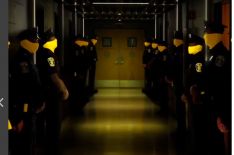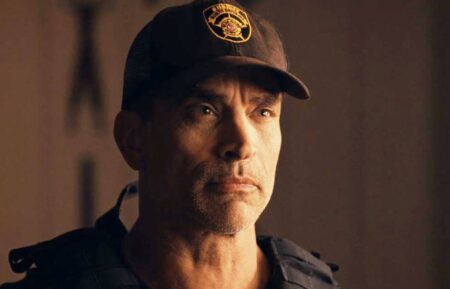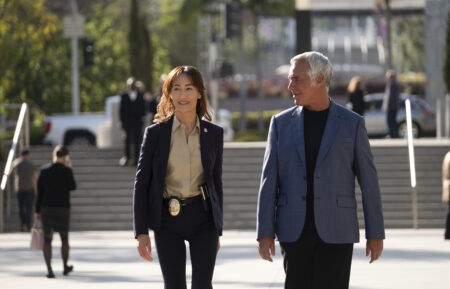‘True Detective’ Gets Back to Its Southern Gothic Roots in Eerie Season 3 Premiere (RECAP)
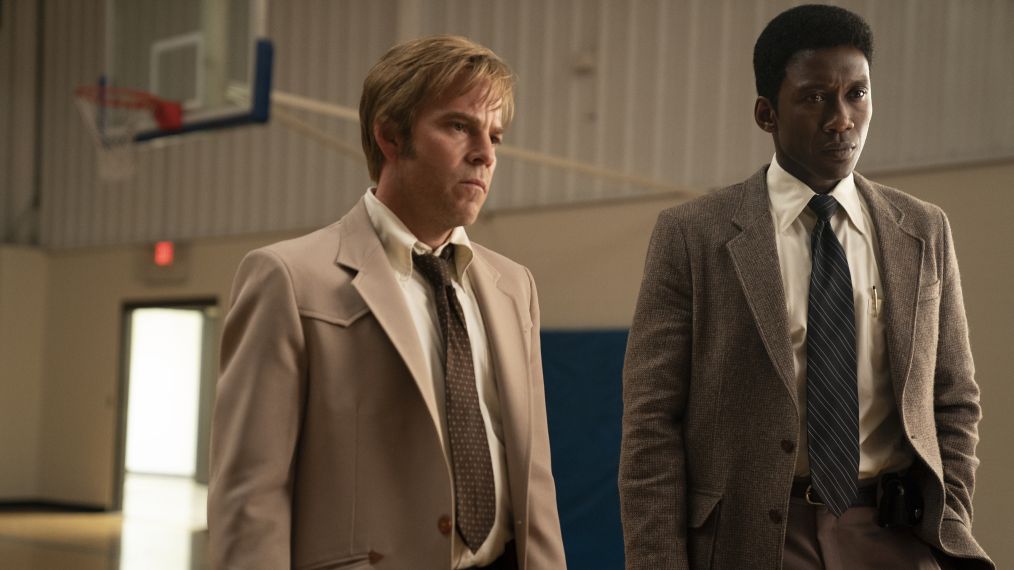
Spoiler Alert
[Spoiler Alert: This article contains spoilers from “The Great War and Modern Memory,” the Season 3 premiere of True Detective.]
True Detective is back and returns to the American South with a new sinister mystery.
After a second season that is widely regarded as having been a time-wasting misstep, creator Nic Pizzolatto is hoping to wash off the Vince Vaughn stench of it all by reminding fans of why they fell in love with his brooding crime series in the first place. That means small-town murder, missing children, hypermasculinity, and a decades-spanning non-linear narrative. All that’s missing is the offbeat philosophizing of Matthew McConaughey’s Rust Cohle.
Leaning into the Season 1 nostalgia so heavily could be considered a step backwards for True Detective, and perhaps it is, but there is no denying the show operates much more comfortably on this setting.
The Season 3 premiere, “The Great War and Modern Memory,” draws its title and some of the themes surrounding memory that the new season will explore from Paul Fussell’s book about World War I. The episode is penned by Pizzolatto and directed by Blue Ruin‘s Jeremy Saulnier, and is an assured start that quickly sets the tone with its grisly crime and gloomy atmospherics. A young boy and girl are missing in the Ozarks, and there is only one man who can find them… maybe.
That man is Wayne Hays, played by Oscar winner Mahershala Ali. Wayne is an Arkansas police detective who served in ‘Nam as a member of the long-range reconnaissance patrol. While Wayne isn’t quite as idiosyncratic as Rust Cohle — at least not yet — he shares some similar personality traits.
Wayne is another world-weary loner who has his own way of doing things, the type of fella who won’t let you shoot a fox, but who will hunt, kill, and eat wild boar if it takes his fancy. A man too proud to start a family in case his troubled personality rubs off on his hypothetical wife and kids. He tracks alone, guided by moonlight and intuition, no matter how dark the situation.
The story follows Wayne across three separate time periods. In 1980, he investigates the missing children, William and Julie; using his expert recon skills, it doesn’t take long for Wayne to find the young boy, his dead body placed ritualistically inside a cave. The psychological effects of the case still linger in 1990, when Wayne is interviewed by two lawyers hoping to overturn the conviction for that murder in light of new evidence. And in 2015, a grey-haired, even-wearier Wayne, who is suffering from early signs of dementia, tries to recall details of the case for a documentary film crew.
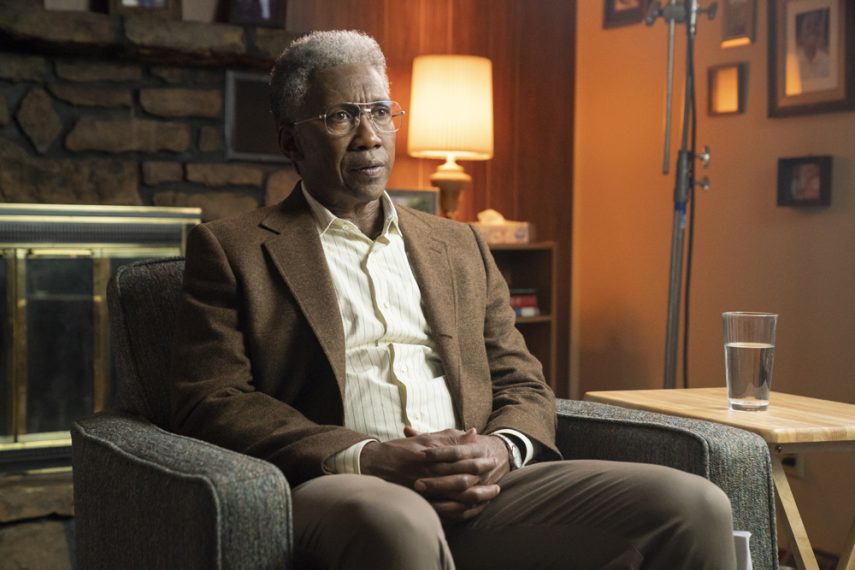
Photo: HBO
Ali brings such a magnetism to his performance that not only does he help hold the three timelines together, but he turns what is essentially another John Wayne-style male-hero-of-a-bygone-era persona into a compelling character we want to follow into the dark woods. Even if it’s not always present in the dialogue, Ali is one of those actors who can express so much with just his eyes; there is a sensitivity and sorrow to Wayne beneath the moody lone-wolf image he presents on the surface.
As for the central narrative, which mostly takes place in 1980, the story beats are familiar, but the mystery is intriguing, nonetheless. The first episode does a sufficient job of introducing the main players and key suspects.
Investigating the crime alongside Wayne is his partner Roland West (Stephen Dorff), a classic, beer-swilling macho-man who has no moral hang-ups about “paying for a**.” If Wayne is the second-coming of Rust Cohle, then Roland is clearly an offshoot clone of Woody Harrelson’s lecherous Marty Hart. However, the dynamic between Wayne and Roland is less tension-ridden than that of their Season 1 doppelgängers.
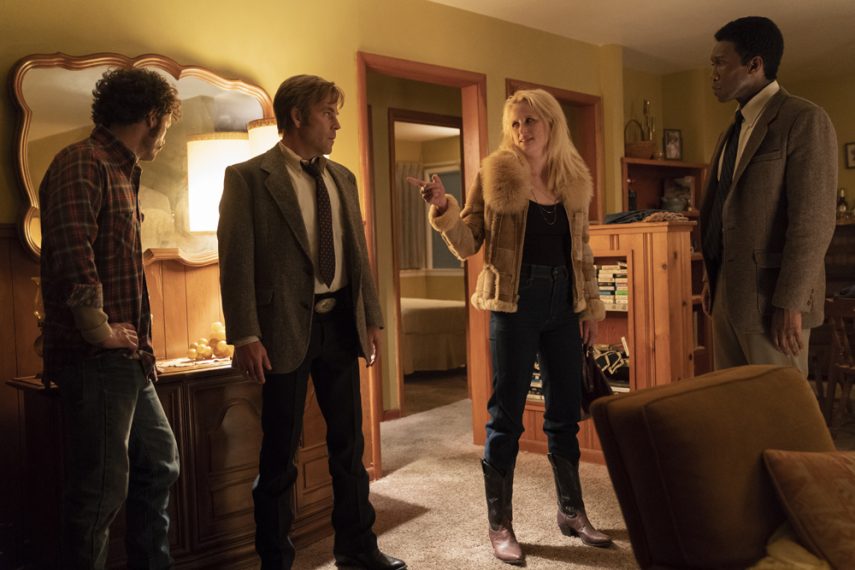
Photo: HBO
Speaking of tense relationships, there is Tom (Scoot McNairy) and Lucy Purcell (Mamie Gummer), the devastated parents of the missing kids who are always mere seconds away from hurling furniture at one another. Suspicion always starts with the parents in these cases, but the focus soon switches to those who saw the children as they rode their bikes through town — a friendly neighbor, a local scrap collector known as the “Trash Man” and some heavy-metal-loving teens in a purple Volkswagen Beetle.
Lastly, there is passing mention of Lucy’s cousin Dan, who stayed with the family some months ago in William’s bedroom. A red flag is raised when Wayne and Roland discover a stash of Playboys under William’s bed and a hole drilled in the wall of his closet that looks into his younger sister’s room. That thread is left dangling for the time being as the investigation starts by spotlighting the local residents, including fellow schoolchildren and the aforementioned “Trash Man,” whom it turns out also served in the Vietnam war.
While Roland quizzes the Beetle-driving teens, leaping to conclusions based on their Black Sabbath t-shirts in a way that recalls the infamous West Memphis Three case, Wayne meets with William’s English teacher, Amelia Reardon (Carmen Ejogo).
It’s here we see the beginnings of the season’s secondary narrative, the relationship between Wayne and Amelia. Their first meeting is professional with an undercurrent of mutual flirtation. By 1990, we discover that the pair are married, and Amelia wrote a best-selling book about the case. In 2015, Amelia is dead, leaving behind a mournful Wayne, who is desperately trying to hold on to her memory.
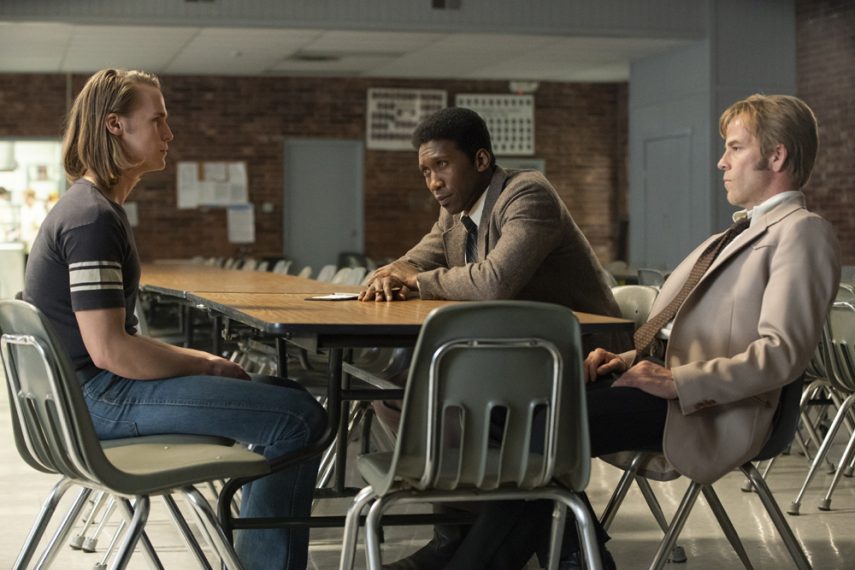
Photo: HBO
If the mystery is to sustain itself over eight episodes, then it’s the cliffhanger revealed in the 1990 timeline that provides the most narrative possibilities.
Many details of the case are intentionally kept hidden from the audience (cleverly aided by older Wayne’s memory loss), but what we do know is that Wayne never found the missing girl. That is why the shock (and hope) on his face is palpable when the lawyers inform him that she is still alive — her fingerprints found at the scene of a recent burglary in Oklahoma. It’s probably not going to lead to a happy ending, judging by how the case still haunts the retired cop 15 years later, but I’m with Wayne in wanting to find out what happened.
Inside the Episode: The Great War and Modern Memory
It’s a strong premiere with plenty of intrigue, atmosphere, and top-notch performances, particularly from Ali. Fans who were clamoring for a return to Season 1’s somber, Southern neo-noir will certainly be satisfied, but the over-reliance on that playbook may become tiresome if the series fails to step out of its shadow.
Extra Case Notes
- In another nod to Season 1, Wayne finds some creepy wicker dolls (one of which looks like a bride) near William’s body. It brings to mind the spooky devil traps Rust found on his hunt for the Yellow King. Do we have another twisted serial killer on our hands?
- The aforementioned West Memphis Three case involved three male teenagers who were convicted, in 1994, of murdering three 8-year-old boys in West Memphis, Arkansas. The case is infamous for its highly publicized trial that saw the prosecution assert the killings were part of a Satanic ritual. The trial and investigation received widespread criticism and have been covered in several documentaries, books, and movies. In 2011, the West Memphis Three entered an Alford plea, allowing them to maintain their innocence while acknowledging that prosecutors have enough evidence to convict them. They were released after having served over 18 years in prison.
- If this season is taking inspiration from the West Memphis Three case, then it wouldn’t surprise me if the prisoner(s) the lawyers are trying to set free in 1990 is Freddy Burns (Rhys Wakefield) and the purple Beetle boys. Amelia describes the group as “socially awkward outcasts,” and Roland is already growing suspicious of the teens based on appearance alone. It probably doesn’t help matters that Freddy lied about drinking beer and looked like he was playing with one of the kids’ abandoned bikes.
- “I always worry a bit about the sensitive ones,” Amelia tells Wayne when talking about William. That line heavily implies she will soon be worrying about our brooding detective.
True Detective, Season 3, Sundays, 9/8c, HBO


